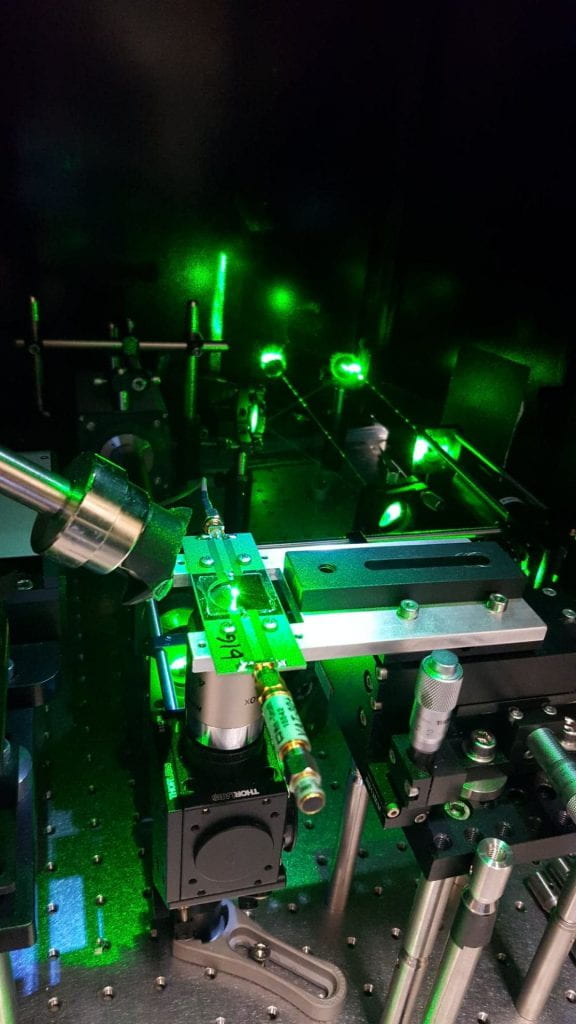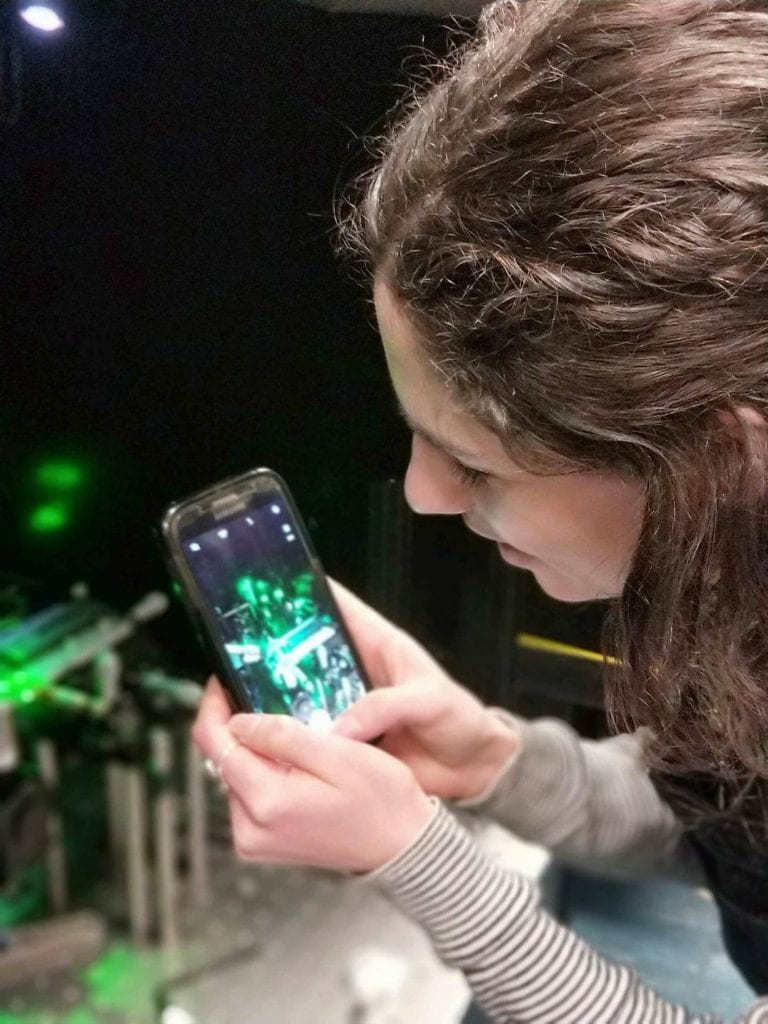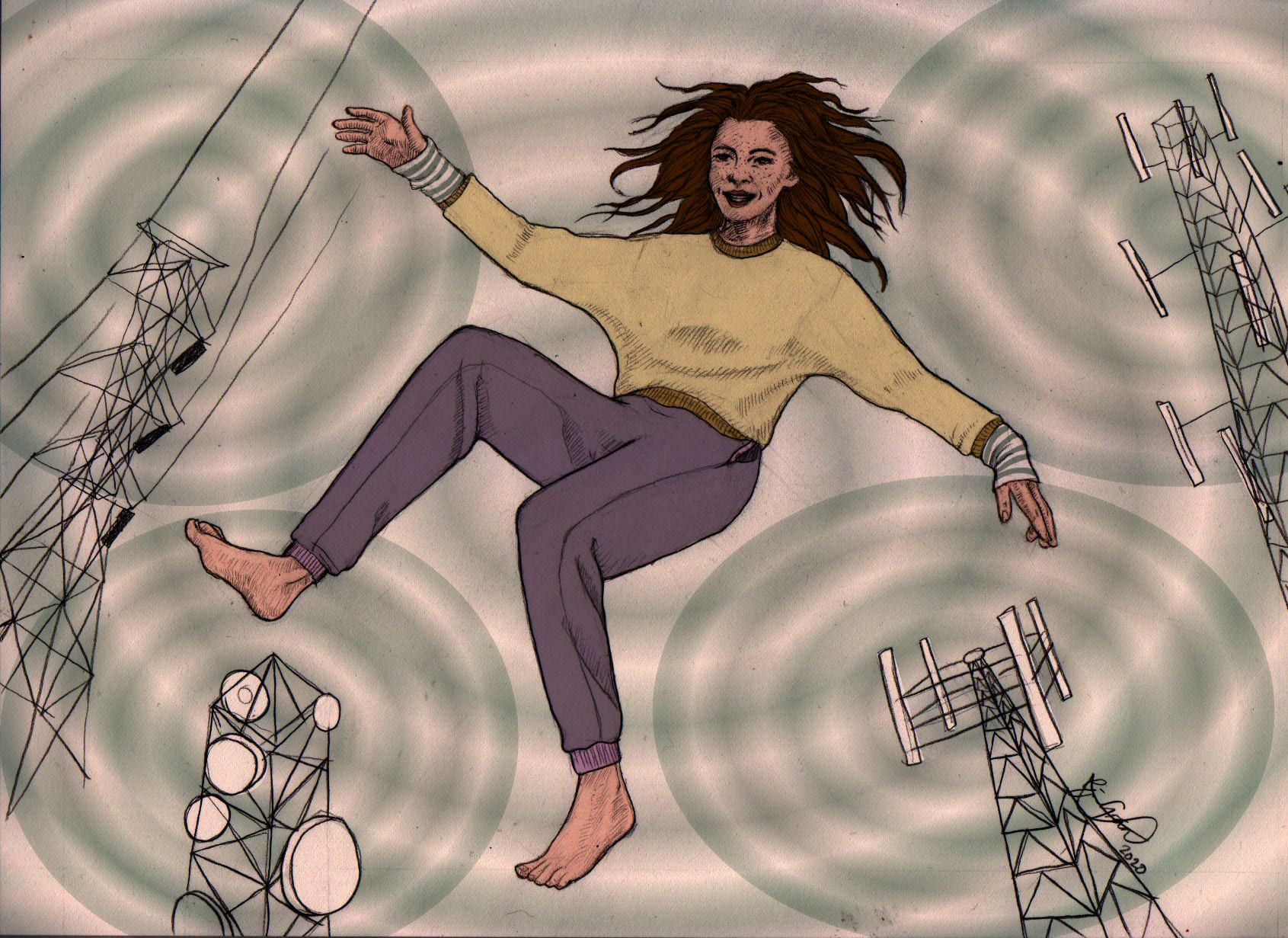
Feature Friday: The Art in Science
This Feature Friday, we’re going to go on a visual journey with one of our former students Erin! Erin took Communication for Research Scientists during her Masters degree, and has now gone on to do her PhD in the school of Physics.
Her research uses diamonds that have been engineered to be sensitive to magnetic fields, which can then be used to examine the magnetic properties of different materials. Her project is using these diamonds to make a diagnostic device that can detect iron inside a protein in blood called ferritin. Ferritin is the protein that stores iron inside the body, but there’s no way to measure how much it’s storing. Current assays typically measure ferritin levels and assume more ferritin means more iron, but she’s hoping these diamonds can directly detect iron levels from within ferritin.


“My research is highly interdisciplinary, so good communication is essential. Being able to target your writing for specific audiences is one of the most important skills that the communication subject taught me and it really comes in handy when sometimes you have to write for biologists and other times physicists!”
She’s also an amazing drawer, and started a blog called The Art in Science (theartinscience.com), combining her passion for both visual art and science communication. Here, she uses drawings to visually explain science, in a way that’s both creative and informative.
“I think both visual and written communication about science are equally important and really enhance each other; sometimes you need an image to clarify or inspire, as well as the main text”
Her most recent blog post was about 5G – debunking some of the conspiracy theories going around, as well as explaining how electromagnetic radiation actually works.

She also uses her illustrative powers to draw up infographics that help explain science, like why beer overflows when it’s tapped with another bottle.

“The process for each post is different, sometimes I think of the image I want to create first, and other times it starts with the article. It’s a way for me to practice my writing and visual creation skills, whether that be illustrative or more traditional drawings, while learning about completely new topics!”
She also uses Instagram to share her art – often with a science twist! Below are some of her paintings of things you can see down a microscope, featuring intestinal villi, a hair follicle and an oocyte.

“I think science communication is so so important, and I’d say the biggest reason is for spreading information to the public. It feels especially relevant now for research results to be heard widely and trusted. The only way that happens is if people with the scientific knowledge do their best to communicate it in an understandable and compelling way. The science communication subject I took really highlighted for me the ways scientists often fail at that, by assuming they need to sound like they know a lot when really you need to assess who you’re trying to speak to and then target your message to them. Most of all, the sci-comm subject taught me that humanising science is extremely valuable when communicating, people usually engage with stories that contain facts rather than the facts themselves.”
Erin hopes to go into science communication as a career, so she can keep learning about different topics, without being as focused as in academia.
If you want to learn more about her research, follow her on Twitter @GrantApplctns and check out her Twitter thread for a Pint of Science.
Categories


